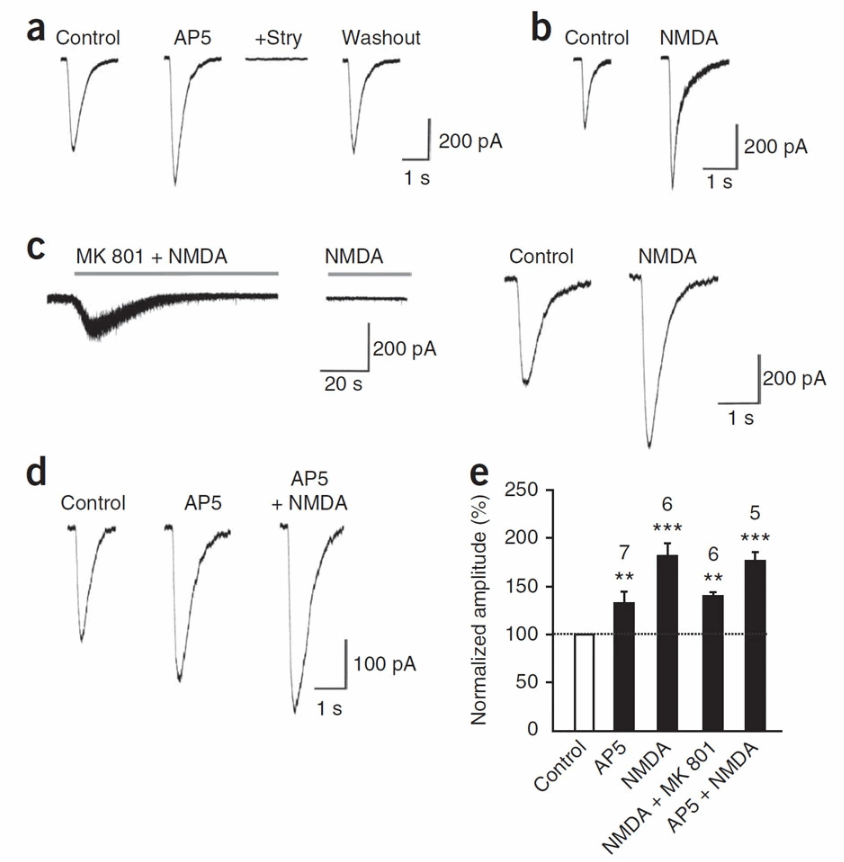
Neuronal excitability in the CNS is primarily controlled by a balance between synaptic excitation and inhibition. In the brainstem and spinal cord, synaptic excitation and inhibition are mediated by the excitatory transmitter glutamate acting on ionotropic glutamate receptor–gated cationic channels and the inhibitory transmitter glycine acting on glycine receptor (GlyR)-gated chloride channels. We found that glutamate and its analog ligands potentiated GlyR-mediated currents in both cultured spinal neurons and spinal cord slices of rats. This potentiation was not dependent on activation of any known glutamate receptor and manifested as an increase in single-channel open probability. Moreover, this glutamate potentiation was seen in HEK293 cells that transiently expressed GlyRs. Our data strongly suggest that glutamate allosterically potentiates GlyR-gated chloride channels, thereby blurring the traditional distinction between excitatory and inhibitory transmitters. Such a rapid homeostatic regulatory mechanism may be important for tuning functional balance between synaptic excitation and inhibition in the CNS.
Paper link: https://www.nature.com/articles/nn.2633